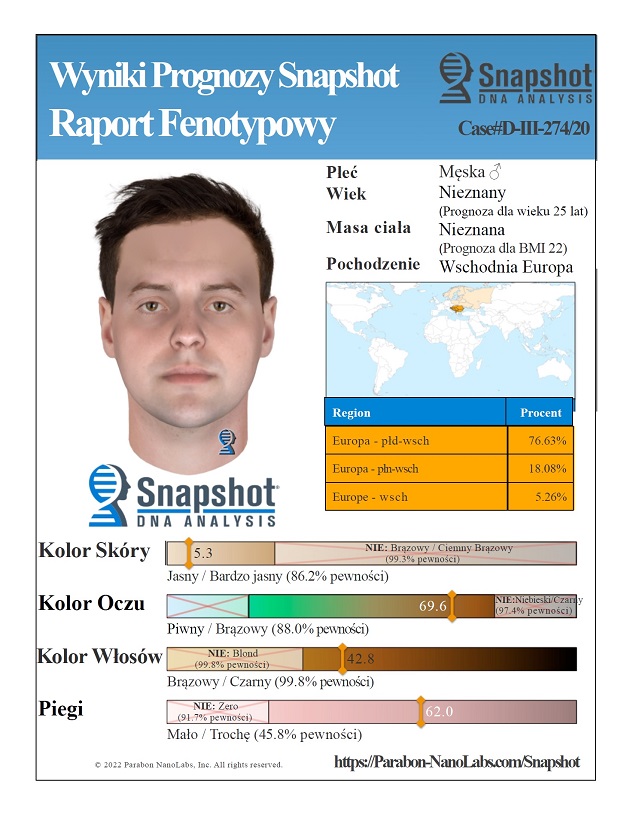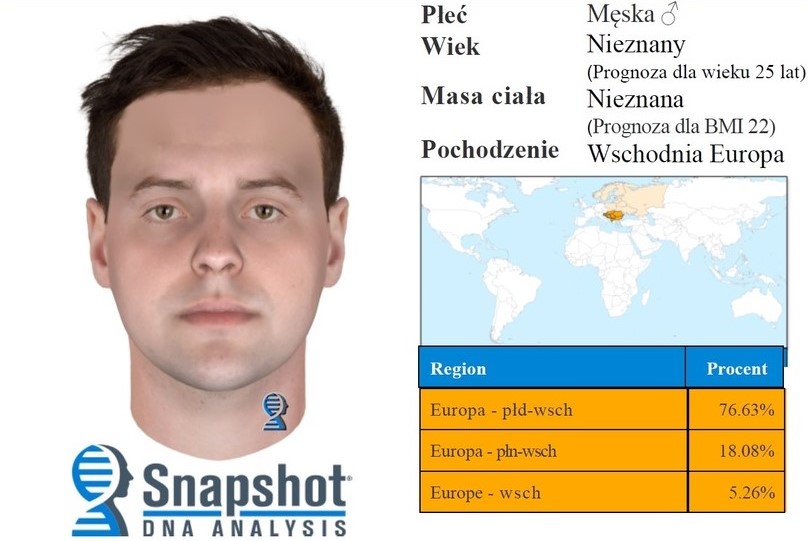For the first time in Poland, advanced genetic testing has been used to create a visualisation of a suspected criminal. Police hope that use of the US technology will help them catch the person responsible for the murder of a woman 18 months ago.
Using DNA recovered from the crime scene, scientists at Parabon Nanolabs Laboratory were able to predict with high probability certain features of the suspect’s appearance, such as eye, hair and skin colour, as well as sex and ancestry.
The resultant image – published by police in the city of Łódź who are investigating the December 2020 murder of a 57-year-old woman – shows a man of eastern European descent with pale skin, dark hair and brown eyes.

Though the suspect’s age and weight are unknown, the image was made to show a man aged 25 with a Body Mass Index (BMI) of 22. The police point out that the suspect may not look this way now, as factors such as hairstyle, facial hair, scars, smoking, drinking and diet can impact on appearance.
“This method, used in the US, has been used in Poland for the first time,” said Łódź police, who note that the technology has so far helped to identify 184 people in the US, including those with links to cases dating as far back as 25 years. They released two examples showing how accurate the visualisations can be.

Police and the victim’s family are offering a 70,000 zloty (€14,700) reward for information that could help apprehend the suspect. Despite almost 1,500 people being questioned and hundreds of tests being carried out, the perpetrator has not yet been caught.
All image credits: Provincial Police Headquarters in Łódź

Alicja Ptak is deputy editor-in-chief of Notes from Poland and a multimedia journalist. She has written for Clean Energy Wire and The Times, and she hosts her own podcast, The Warsaw Wire, on Poland’s economy and energy sector. She previously worked for Reuters.




















